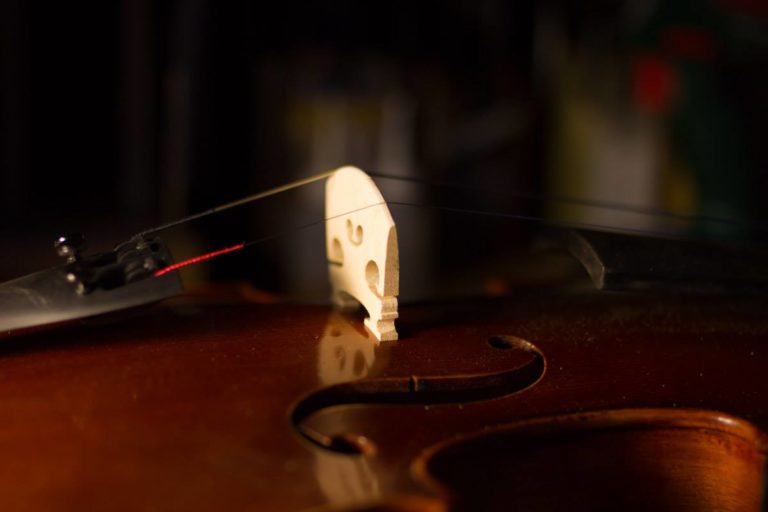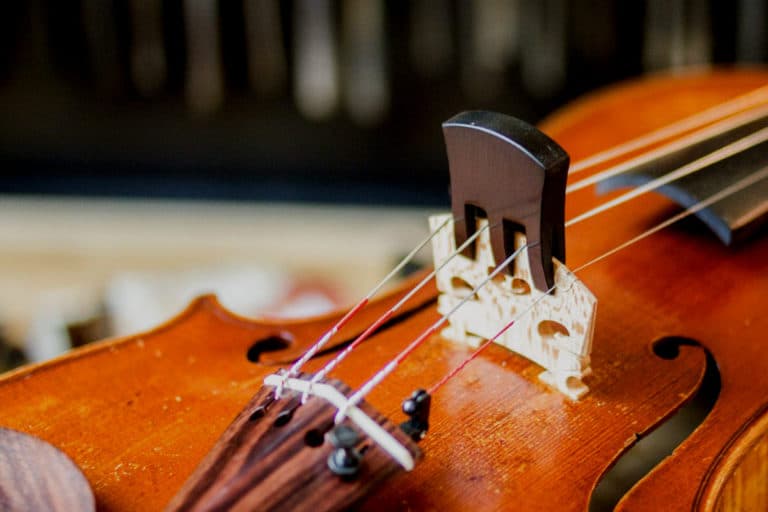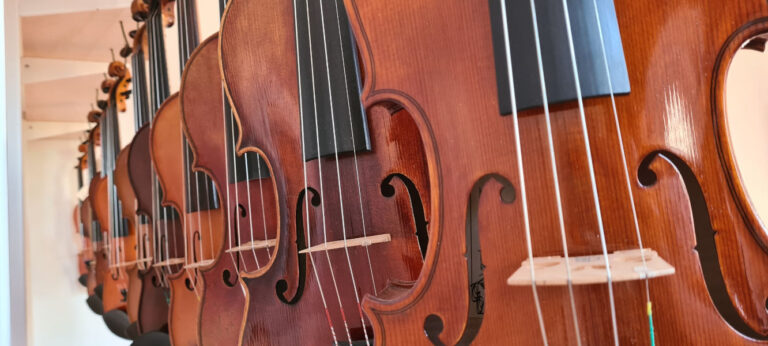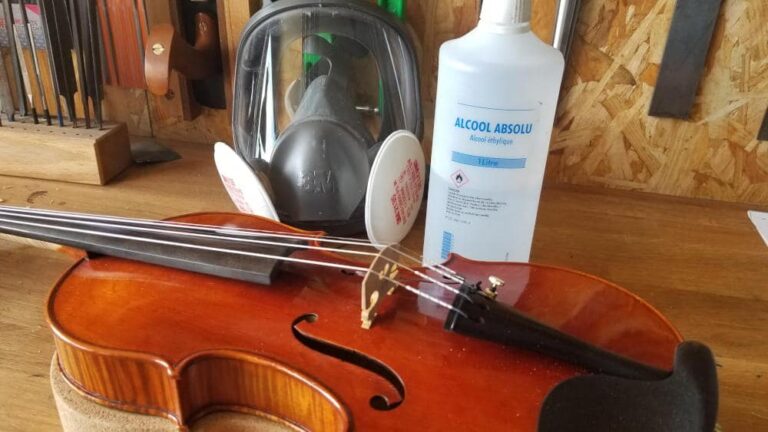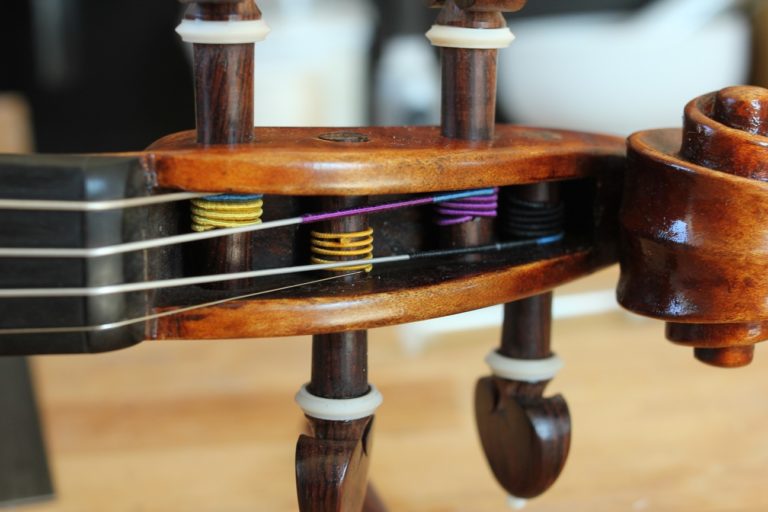Whether you're a beginner or a professional, it's easy to get baffled by the infinite number of rope models available. The complex material assemblies that make up the cores and windings, as well as the advanced technologies used by manufacturers, make each string unique. So many possibilities that it's hard to choose the right strings for your violin, viola or cello. That's why I'll try to guide you through this page by giving you a few pointers.

How to choose the right strings for your violin?
I realize that in trying to answer this question, I'm going to make it even thicker. However, in this article, I'm going to try to give you the key elements that will enable you to move forward and form your own opinion. After all, you'll realize that there's no right or wrong answer. However, certain choices can bring you a radically different sound and playability, and I'll try in these few lines to guide you in the right direction.
The importance of strings
Like all musical production tools, violin tone is an abstract notion. This makes it very difficult to judge the effectiveness of a set of strings on our instrument or our ears on the basis of anything other than personal experience. And yet, it's far from foolish to rely on the experience of other musicians or luthiers. Bear in mind, however, that other people's solutions won't necessarily work for you.
Here are a few points to note about string selection:
- First and foremost, strings are an essential element in the creation of sound. That's why using poor-quality strings will cripple even the best instruments. However, good strings will considerably improve the performance of even the worst instruments.
- Then there's the question of what makes a good string, because that's where objectivity ends. However, in a nutshell, the right string is the one that will enable you to achieve your goals in terms of playability, sound and stability(but why not also economically).
- There's no secret about it: price is often directly related to the results you can expect to achieve. However, overpriced strings will not necessarily suit your instrument or what you want to do with it.
- Another point to note is that it is possible to play with the tension of the strings in the same series, as they are often available in low, medium and high tension. These differences can greatly influence the result.
- Finally, if you are installing a new set, it is important to play it over a few weeks to get a precise idea of the sound result. The strings need to stabilize before they reach their full acoustic potential and stability.
How a rope is made
A string can be broken down into several key elements that determine its timbre, power, response and comfort. These include :
- The core, the main component of a string, at its center, is made of gut, metal or synthetic materials. It determines the body and suppleness of the string.
- The winding, the metal ribbon that surrounds the core on the lowest strings. It is used to ballast a string to reduce its diameter and give it a certain robustness, not forgetting its effect on timbre.
- The total diameter of the string is the result of the combination of the two previous points. It is, however, of great importance to the touch, and must be consistent from string to string.
- Tension is an extremely important factor, defined not only by the construction of the strings, but also that of the instrument.
- The ball or loop is where the rope ends. It corresponds to the way you will attach it to the tailpiece.
- The bristles serve not only to increase the rope's grip on the pegbox, but also to identify rope patterns and placement.
The soul of a rope
Gut-core strings
These are the most archaic of strings, coming down to us from the earliest days of string music. Generally made from sheep intestines, gut strings don't necessarily have a lower tension than those based on a synthetic or metal core. They also have a complex, richly harmonic sound that is highly prized by musicians.
Thanks to their tension and manufacturing method, these strings are more supple under the fingers. However, their response is slower, requiring greater finesse in bowing. As they are made from natural materials, they require more frequent tuning. They are also very sensitive to changes in temperature or humidity, and are reputed to be unstable.
These strings are favored by many musicians for their excellent sound. However, they are not widely used, as they are a real pain to use. They require a lot of maintenance, go out of tune very quickly, and have a rather limited lifespan... All arguments that make most players prefer to do without them.
Steel core strings
The steel E string was introduced for violins at the beginning of the 20th century. Other strings soon followed, accompanied by different windings, most often in chromed steel. Steel strings were an almost immediate success. Generally speaking, steel core strings have a fast, clear and brilliant response, as well as being very precise. What's more, they last much longer, are highly resistant to corrosion and are insensitive to humidity movements. The radical opposite of gut.
On the other hand, you really shouldn't expect much depth or warmth. Likewise, they are sometimes stiff under the fingers and a little rigid, which isn't great for comfort.
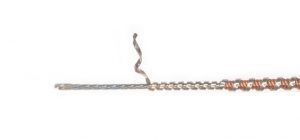
Focus on chanterelles
Nowadays, I think it's safe to say that all violins are equipped with steel chanterelles. However, they are available in three different types:
- Simple(the original): a steel wire of different diameters depending on the desired tension.
- Plated: a steel wire plated with a more or less precious metal such as tin, silver, gold, platinum...
- Coiled: a steel wire covered with a winding, usually made of aluminium. This solution increases control and softens the string, while avoiding whistling.
- Helical: a steel wire that has been specially treated to give it a spring-like shape. This solution creates a vibration with many advantages.
Synthetic core strings
In the middle of the 20th century, Austrian rope manufacturer Thomastik-Infeld introduces its new strings with a perlon core(a type of nylon): The Dominant. Their success was rapid, and they are still the best-selling violin string today. The idea was to recapture the feel and sound of gut strings. They are also much more stable in tuning, and have a respectable lifespan. On the other hand, the sound is more centered and the timbre is generally not as rich as their ancestors.
These days, synthetic strings can be found in an infinite number of configurations. They are far ahead of all their counterparts in terms of use, and despite the few shortcomings they may have, they are an excellent compromise to satisfy the majority of musicians.
The different strings in a nutshell
[columns] [span4]
Hose
[icon color="#81d742″ icon="kt-icon-plus-circle " size="25px"]
- Very good harmonic richness and depth.
- Very soft touch.
[icon color="#dd3333″ icon="kt-icon-minus-circle" size="25px "]
- Very sensitive to variations in humidity.
- High maintenance.
- Bare ropes fray and can be very large in diameter.
- Limited lifetime.
- High cost.
- Not usable with modern fine-tuners(but they don't necessarily need to be).
[/span4][span4]
Steel
[icon color="#81d742″ icon="kt-icon-plus-circle " size="25px"]
- Very long life.
- High resistance to oxidation and wear (on some windings).
- Low cost.
- Insensitive to humidity variations.
[icon color="#dd3333″ icon="kt-icon-minus-circle" size="25px "]
- The sound lacks warmth and richness.
- Sometimes lacks comfort and is a little stiff under the fingers.
[/span4][span4]
Synthetic
[icon color="#81d742″ icon="kt-icon-plus-circle " size="25px"]
- Very comfortable to play.
- Good stamp quality/price ratio.
- Insensitive to humidity variations.
[icon color="#dd3333″ icon="kt-icon-minus-circle" size="25px "]
- May take some time to stabilize after installation.
- They can be broken instantly using modern tensioners.
[/span4][/columns]
String gauge and tension
As I mentioned earlier, voltage and gauge are closely related, yet they need to be clearly distinguished.
Unwound gut strings are an excellent example. Tuned to the same note as a string with a steel or synthetic core, a gut string will always be thicker(larger gauge) and have a lower tension than other types of string. So when you change strings, you'll probably have to widen the string passages in the bridge and saddle.
To put it simply, when buying strings, you're faced with three main gauges of the same model, and it's important to understand the differences between them. Compared with amedium-gauge string, a thin string(also known as light, weich or dolce) will have less tension, a clearer sound and better response, but will sacrifice a little volume. A thicker string(also called heavy, stark or forte) will produce the opposite characteristics, a darker sound but less sensitive response.
Another amazing fact is that if you replace one string by changing its tension, the sound of all the strings will change with it. This is because tone depends on the overall tension applied to the instrument.
Winding
Winding is the process of wrapping a material, usually metal, around the core. This technique was first developed to reduce the imposing diameters of low gut strings. Today, wrapping strings with all kinds of metals and alloys allows precise control of many factors, such as tone, gauge and tension. For example, manufacturers can control response and tension using metals like tungsten. This creates a high-tension string that is thinner than if other less dense metals such as aluminum or silver had been used.
We also note the use of specific metals because of their physical or chemical properties. Some musicians with very acidic perspiration will find that their aluminum windings deteriorate very quickly. On the other hand, the use of silver or chromed steel for the ribbon would avoid such consequences.
Choosing the right strings for your violin
Each instrument has its own natural characteristics. These are the ones that are defined at the time of construction and with which you will have to get used to living, as they are difficult to change. On the other hand, a skilled luthier can improve or modify certain parameters of the instrument to enhance its capabilities. One of the easiest parameters to change for someone not in the trade is replacing the strings. That's why the choice of strings is crucial to achieving your goal.
Before choosing the strings for your violin and starting to experiment, it's a good idea to ask yourself a few questions about your current tone. What are the sound characteristics of my instrument? Which strings do I use? What sound do I want to hear? Once you've answered these questions, you can start following this guide to find the sound you're looking for.
My timbre is too high, strident or clear
There are several ways to balance a sound that's a little too sharp. The main one is to opt for a string set with a lower tension, so that you can use the same string set you already own, but with a lower tension. Alternatively, most manufacturers have their own models that adapt to this type of sound. For example, you can choose from the following string sets:
- Corelli New Crystal: as the name suggests, these are rather dark and loose.
- Pirastro Aricore: very dark strings, specially designed for strident violins.
- Gypsy feedback: among the most relaxed strings on the market.
- Thomastik Infeld Rouge: warm thanks to gold-plated E.
The sound is very diffuse and lifeless
When the tone is a little sluggish and needs toning up, you can opt for perennial strings. Very often, these strings are accompanied by the word "Solo".
- Thomastik TI
- Pirastro Passione Solo
- Pirastro Perpetual
- Thomastik Vision Solo & Titanium Solo
- Pirastro Wondertone Solo
- Warchal Brilliant & Panachage Russian Style
The style of music
It's all about using the right strings to tackle a specific repertoire. Of course, this is not a universal rule and there will (only) be exceptions. However, it is very common to find the following:
- In classical music, most musicians use synthetic or gut strings. The choice will depend on personal preference.
- In contemporary music, such as folk and jazz, instrumentalists prefer metal strings. Probably because they offer the power to make themselves easily heard among other instruments. What's more, if the instrument is amplified, then the quality of the string is less important, as the signal can then be modified and embellished.
- For early and baroque music, the use of gut strings is essential. In fact, it's even better if you find an unwound version. It's even more realistic for a period reconstruction.
Choosing violin strings in my store
[carousel type=cat-products columns=4 items=8 speed=9000 scroll=all cat=cords]
Choosing your violin strings with panache
Even though complete sets are designed to work perfectly, offering a seamless transition between strings and a good balance of sound, they may not suit every musician. That's why some musicians decide to go off the beaten track and mix and match.
A vast world opens up, where the only limits are your imagination(and your wallet).
Choosing and storing violin strings
For most of us, it's best to put off replacing strings as long as possible. It's a question of budget, of course, but far from being a stick-in-the-mud, it's a good idea to be aware of a few factors that will help you get the most out of your strings over time.
- First of all, it's important to check that they are properly installed in the rope channels. The slightest defect could damage them.
- Then you need to clean them regularly, ridding them of rosin residues and cleaning all the areas you touch.
- In fact, it's best not to clean them with solvents and other cleaners. I know there are lots of them out there, but I tend to think they're more than just harmful over time.
- Finally, avoid over-tensioning them, as they won't be able to withstand it.
Depending on these factors, the lifespan of your ropes may vary from a few weeks to several months. It's important to note, however, that even during storage, a string under tension gradually stretches and loses its qualities. In this case, you'll need to think about changing the string set to restore the instrument's timbre once it has been woken from its slumber.
The problem of acid sweat
If you find that your strings are wearing out far too quickly and only last a few weeks before breaking, it's possible that your perspiration is to blame.
When should I change my strings?
- Professional: depending on requirements, every few weeks/months depending on ropes
- Student: Depending on the student's level of commitment, he or she can change strings at key moments, before auditions or exams, but neither too early nor too late.
- Amateur: The amateur is free to change his strings according to his desires and budget. But once a year with regular playing may be enough.
- Beginners: For beginners, it's important to keep ropes in good condition to facilitate learning. At least once a year is necessary.
[blog_posts items="1″ orderby="date " ids="8751″]
The ideal choice of violin strings?
To conclude, we've seen that choosing the right strings for your violin can be a long and tedious process. You might ask me if there's a miracle solution, a string that has the answer to everything. This would have the advantage of greatly simplifying our lives, musicians and luthiers alike. Unfortunately, just as there is no such thing as the ultimate violin, viola or cello, each string is like a key that unlocks an instrument's potential. Attempting to penetrate this safe with so many combinations would probably be impossible without the right tools.
I'm sharing my experience to help you, and I hope you'll find these explanations useful as you embark on the journey of choosing the strings for your violin.

